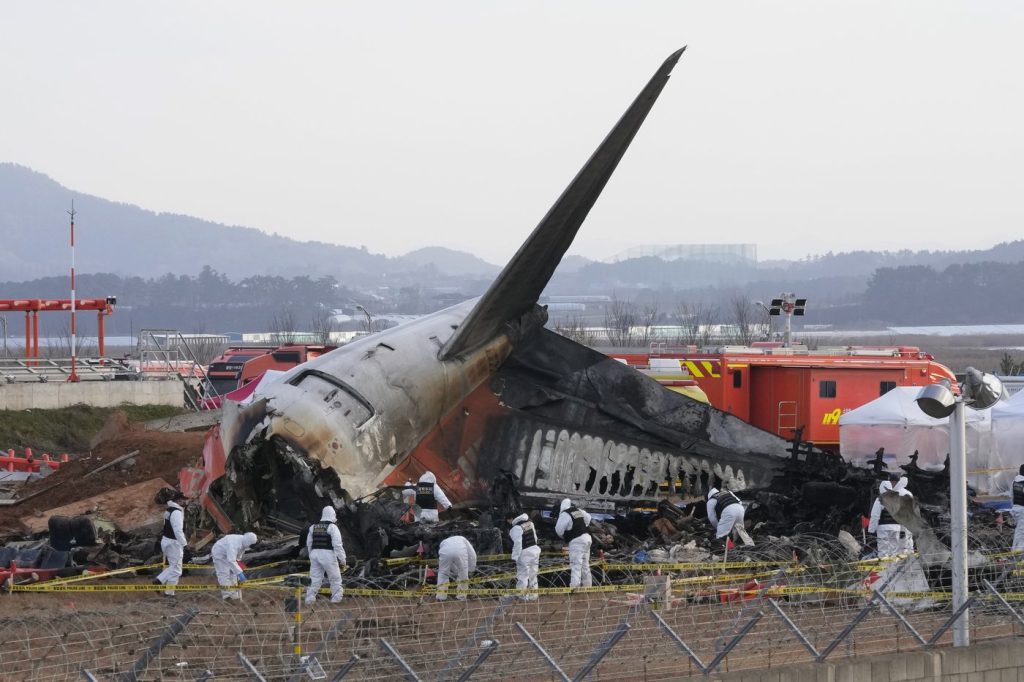SEOUL, South Korea (AP) — In a significant response to a tragic air disaster, South Korea will be removing concrete embankments located near airport runways. This decision follows reports indicating that these embankments, which house antennas known as localizers, contributed to worsening the recent crash of a Jeju Air plane.
On December 29, 2024, a Boeing 737-800 skidded off the runway at Muan International Airport after its landing gear failed to deploy properly. The aircraft collided with the concrete structure, resulting in a fire that claimed the lives of all but two of the 181 individuals on board. The high casualty rate has raised concerns regarding the localizer system in place at Muan Airport, leading to a reassessment of airport safety protocols.
The Korean Transport Ministry has announced plans to replace the existing concrete embankments with breakable materials aimed at enhancing safety during landings. Various media outlets, including the Korea JoongAng Daily, reported on this preventive measure as part of broader commitments from South Korean authorities to improve airport infrastructure and ensure passenger safety.
As investigations into the incident continue, officials revealed that the black boxes from the Boeing jetliner ceased recording approximately four minutes before the crash. This lapse has been described as potentially complicating efforts to understand the precise causes of the disaster. Initial findings from investigators noted that air traffic controllers had alerted the pilot to the possibility of bird strikes just two minutes before the aircraft transmitted a distress signal confirming that a bird strike had indeed occurred. This prompted the pilot to attempt an emergency landing.
In light of these findings, South Korean officials are now under pressure to address the safety concerns associated with the airport’s localizer system and develop measures that can prevent similar tragedies in the future. The removal of the concrete embankments is viewed as a critical initial step in achieving these objectives and restoring public confidence in the aviation sector.
The incident has drawn attention not only to Muan International Airport but also to overall airport safety measures across South Korea, highlighting the need for reevaluation and enhancement of existing protocols. As the investigations progress, further details are likely to emerge, shaping future policies and regulations aimed at preventing aviation disasters.










